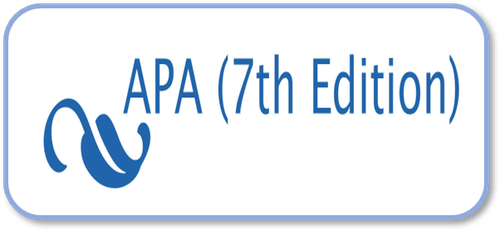The Role Of Leadership Style In Fostering Creativity In The Workplace
DOI:
https://doi.org/10.24912/jm.v25i3.760Abstract
The success of a business in the face of competition is inextricably linked to the ability of a transformational leader to foster a climate of creativity in the workplace. This study presents the findings of an analysis of the role of transformational leaders in fostering a climate of creativity in organizations. Multiple regression analysis is used to analyze data collected from respondents who are randomly selected from employees at several companies and then processed using the SmartPLS application. The researcher developed an instrument for the variables transformational leadership and climate of creativity based on several instruments used in previous research. The findings indicate that there is a strong correlation between transformational leadership and a climate of creativity, implying that transformational leadership plays a critical role in fostering creativity in the workplace.
References
Amabile, T. M., Collins, M. A., Conti, R., Phillips, E., Picariello, M., Ruscio, J., and Whitney, D. (2018). Creativity in context: Update to the social psychology of creativity. Routledge.
Amabile, T. M., Mueller, J. S., Simpson, W. B., Hadley, C. N., Kramer, S. J., and Fleming, L. (2002). Time pressure and creativity in organizations: A longitudinal field study.
Amabile, T. M., Schatzel, E. A., Moneta, G. B., and Kramer, S. J. (2004). Leader behaviors and the work environment for creativity: Perceived leader support. The Leadership Quarterly, 15(1), 5–32.
Aprilliyani, R. (2006). Pengaruh Kreativitas karyawan terhadap pengembangan Inovasi Baru Bagi Perusahaan. Fokus Ekonomi: Jurnal Ilmiah Ekonomi, 1(1), 31–37.
Asbari, M., Purba, J. T., Hariandja, E. S., dan Sudibjo, N. (2021). Membangun Kesiapan Berubah dan Kinerja Karyawan: Kepemimpinan Transformasional versus Transaksional. Jurnal Ilmiah Manajemen Dan Bisnis, 22(1), 54–71.
Azliyanti, E., Jadmiko, P., dan Utami, W. (2019). Peran Pemediasi Efikasi Diri Kreatif Pada Hubungan Antara Persepsi Terhadap Kepemimpinan Transformasional Pada Kreativitas Karyawan. Relevance: Journal of Management and Business, 2(2), 347–356.
Bandura, A. (2002). Social cognitive theory in cultural context. Applied Psychology, 51(2), 269–290.
Bass, B. M. (1995). Comment: Transformational leadership: Looking at other possible antecedents and consequences. Journal of Management Inquiry, 4(3), 293–297.
Bass, B. M., Avolio, B. J., Jung, D. I., and Berson, Y. (2003). Predicting unit performance by assessing transformational and transactional leadership. Journal of Applied Psychology, 88(2), 207–218.
Chen, G., Farh, J.-L., Campbell-Bush, E. M., Wu, Z., and Wu, X. (2013). Teams as innovative systems: Multilevel motivational antecedents of innovation in R&D teams. Journal of Applied Psychology, 98(6), 1018.
Cooke, R. A., and Rousseau, D. M. (1988). Behavioral norms and expectations: A quantitative approach to the assessment of organizational culture. Group & Organization Studies, 13(3), 245–273.
Ekvall, G., and Ryhammar, L. (1999). The creative climate: Its determinants and effects at a Swedish university. Creativity Research Journal, 12(4), 303–310.
Gong, Y., Huang, J.-C., and Farh, J.-L. (2009). Employee learning orientation, transformational leadership, and employee creativity: The mediating role of employee creative self-efficacy. Academy of Management Journal, 52(4), 765–778.
Guns, Stevens, MD. (2020). Transformational Leadership :A Closer Look at the Effects of Transformational Leadership. Harvard Medical School.
Gupta, V., and Singh, S. (2013). How leaders impact employee creativity: A study of Indian R&D laboratories. Management Research Review.
Herrmann, D., and Felfe, J. (2013). Moderators of the relationship between leadership style and employee creativity: The role of task novelty and personal initiative. Creativity Research Journal, 25(2), 172–181.
Hon, A. H. Y. (2012). When competency-based pay relates to creative performance: The moderating role of employee psychological need. International Journal of Hospitality Management, 31(1), 130–138.
Hunter, S. T., Bedell, K. E., and Mumford, M. D. (2007). Climate for creativity: A quantitative review. Creativity Research Journal, 19(1), 69–90.
Jung, D. D., Wu, A., and Chow, C. W. (2008). Towards understanding the direct and indirect effects of CEOs’ transformational leadership on firm innovation. The Leadership Quarterly, 19(5), 582–594.
Jung, D. I. (2001). Transformational and transactional leadership and their effects on creativity in groups. Creativity Research Journal, 13(2), 185–195.
Kazama, S., Foster, J., Hebl, M., West, M., and Dawson, J. (2002). Impacting climate for innovation: Can CEOs make a difference. 17th Annual Conference of the Society for Industrial and Organizational Psychology, Toronto, Canada, 1–26.
Khasanah, I. F. N., dan Himam, F. (2018). Kepemimpinan transformasional kepribadian proaktif dan desain kerja sebagai prediktor perilaku kerja inovatif. Gadjah Mada Journal of Psychology (Gamajop), 4(2), 143–157.
Makena, J. E. (2017). Pengaruh Kepemimpinan Transformasional Terhadap Kinerja Organisasi Melalui Pembelajaran Organisasi dan Inovasi Pada Hotel Prama Sanur Beach Bali. Jurnal Ekonomi & Bisnis JAGADITHA, 4(2), 76–88.
Masro’in, B. (2020). Pengaruh Kepemimpinan Transformasional Terhadap Kreativitas Karyawan Melalui Innovation Climate Sebagai Variabel Mediasi Dan Creative Self-Efficacy Sebagai Variabel Moderasi Pada Karyawan PT. Sentra Vidya Utama. Universitas Airlangga.
Mustika, M. S. (2017). Pengaruh Kepribadian Proaktif pada Kreativitas Karyawan dengan Kepemimpinan Transformasional dan Autonomi Kerja sebagai Variabel Pemoderasi. Jurnal Bisnis Darmajaya, 3(2), 126–145.
Nardo, R., Evanita, S., & Syahrizal, S. (2018). Pengaruh Kepemimpinan Transformasional, Dan Lingkungan Kerja Non Fisik Terhadap Perilaku Inovatif. JEBI (Jurnal Ekonomi Dan Bisnis Islam), 3(2), 209–215.
Nasir, M., Taufan, R. R., Fadhil, M., dan Syahnur, M. H. (2021). Budaya Organisasi Dan Disiplin Kerja Serta Pengaruhnya Terhadap Kinerja Karyawan. AkMen JURNAL ILMIAH, 18(1), 71–83.
Nieves, J., Quintana, A., and Osorio, J. (2014). Knowledge-based resources and innovation in the hotel industry. International Journal of Hospitality Management, 38, 65–73.
Ostrom, A. L., Bitner, M. J., Brown, S. W., Burkhard, K. A., Goul, M., Smith-Daniels, V., Demirkan, H., and Rabinovich, E. (2010). Moving forward and making a difference: research priorities for the science of service. Journal of Service Research, 13(1), 4–36.
Parker, C. P., Baltes, B. B., Young, S. A., Huff, J. W., Altmann, R. A., Lacost, H. A., and Roberts, J. E. (2003). Relationships between psychological climate perceptions and work outcomes: a meta‐analytic review. Journal of Organizational Behavior: The International Journal of Industrial, Occupational and Organizational Psychology and Behavior, 24(4), 389–416.
Patterson, M., Warr, P., and West, M. (2004). Organizational climate and company productivity: The role of employee affect and employee level. Journal of Occupational and Organizational Psychology, 77(2), 193–216.
Setyowati, S., dan Etikariena, A. (2019). Peran Gaya Pemecahan Masalah dalam Hubungan Kepemimpinan Transformasional dengan Perilaku Kerja Inovatif. Jurnal Diversita, 5(2), 115–125.
Shalley, C. E., and Gilson, L. L. (2004). What leaders need to know: A review of social and contextual factors that can foster or hinder creativity. The Leadership Quarterly, 15(1), 33–53.
Su-Yung, F. (2002). The Relationship Among Transformational Leadership, Organizational Commitment and Citizenship Bahavior: The Case of Expatriates. Master’s Thesis. URN: etd0201101-153856.
Su’ud, M. (2000). Persepsi Sosial Tentang Kredibilitas Pemimpin. Sinergi Kajian Bisnis Dan Manajemen, 3(1), 51–65.
Sun, L.-Y., Zhang, Z., Qi, J., and Chen, Z. X. (2012). Empowerment and creativity: A cross-level investigation. The Leadership Quarterly, 23(1), 55–65.
Wang, C.-J., Tsai, H.-T., and Tsai, M.-T. (2014). Linking transformational leadership and employee creativity in the hospitality industry: The influences of creative role identity, creative self-efficacy, and job complexity. Tourism Management, 40, 79–89.
Williams, F., and Foti, R. J. (2011). Formally developing creative leadership as a driver of organizational innovation. Advances in Developing Human Resources, 13(3), 279–296.
Wulansari, R. C. (2016). Pengaruh Gaya Kepemimpinan Transformasional Terhadap Kreativitas Melalui Motivasi Intrinsik (Studi Pada Karyawan Divisi Produksi Pt. Dok Dan Perkapalan Surabaya Persero). Jurnal Ilmu Manajemen (JIM), 4(3), 1–10.
Zhou, J., and George, J. M. (2001). When job dissatisfaction leads to creativity: Encouraging the expression of voice. Academy of Management Journal, 44(4), 682–696.
Downloads
Published
How to Cite
Issue
Section
License
Copyright (c) 2021 Jurnal Manajemen

This work is licensed under a Creative Commons Attribution-NonCommercial-ShareAlike 4.0 International License.
This journal provides immediate open access to its content on the principle that making research freely available to the public supports a greater global exchange of knowledge.

This work is licensed under a Creative Commons Attribution-NonCommercial-ShareAlike 4.0 International License



















